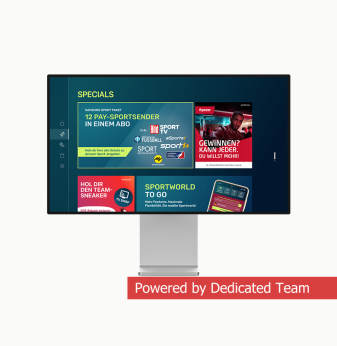From Algorithms to Audiences: How AI Is Enhancing Live Streaming Quality and Engagement

Artificial intelligence is no longer a futuristic concept for the broadcasting industry — it is a real-time enabler of better quality, lower latency, and personalized content experiences. In live streaming, where seconds matter and viewer retention is fragile, AI plays a critical role in reshaping workflows, optimizing delivery, and engaging audiences like never before.
In this article, we explore how AI-powered tools are transforming live streaming, the technologies behind them, and what this means for the future of content delivery.
Why AI Is a Game Changer in Live Streaming
Live content comes with unique challenges: unstable networks, unpredictable viewer behavior, and minimal tolerance for buffering or errors. AI can mitigate these issues by making real-time decisions that enhance the stream without human intervention.
How does AI improve live video streaming quality in real time?
AI improves live video streaming quality in real time through dynamic bitrate adaptation, automated resolution scaling, and error correction algorithms. These systems monitor network conditions and viewer devices, adjusting streams to maintain the best possible quality with minimal interruptions.
Key Use Cases of AI in Live Streaming
1. AI-Powered Video Encoding and Compression
Modern codecs, enhanced with AI, can compress video more efficiently without compromising quality. Machine learning models predict areas of high motion or detail and allocate bits accordingly, leading to bandwidth savings and smoother playback.
2. Predictive Bitrate Adaptation
Instead of responding to buffering events, AI predicts network fluctuations and proactively adjusts bitrate levels. This approach results in a seamless experience for viewers across various connection qualities.
3. Automated Camera Control and Scene Detection
For multi-camera event setups (concerts, sports, conferences), AI can automate camera switching based on facial recognition, motion tracking, or crowd reactions. This reduces the need for manual control while keeping the stream visually dynamic.
4. AI-Driven Noise Reduction and Image Enhancement
Neural networks can enhance low-light footage, remove compression artifacts, and smooth out shaky visuals in real time. This is especially useful for mobile journalists or remote event coverage.
5. Smart Subtitles and Real-Time Translations
Natural Language Processing (NLP) enables automatic closed captioning and multi-language translations. These features make live streams more accessible to global and hearing-impaired audiences.
Personalized Viewer Experiences
AI enables hyper-personalization in content delivery. Platforms can analyze user behavior to suggest relevant streams, provide targeted advertisements, and even adjust the stream layout or angle for individual viewers.
How does AI personalize live stream content for viewers?
AI personalizes live stream content by analyzing user interaction data such as viewing history, click patterns, and preferences. It then curates suggestions, adjusts audio or visual focus, and integrates interactive elements that match individual interests.
Boosting Engagement Through AI
AI tools increase audience engagement by supporting interactive features such as polls, gamified overlays, and sentiment analysis during live broadcasts. Platforms use AI to detect viewer reactions in real time and adapt the content flow accordingly.

Enhancing Content Moderation and Safety
Live content can be unpredictable. AI-powered moderation tools detect inappropriate visuals or speech instantly and act accordingly—muting, blurring, or cutting streams to ensure compliance with platform policies.
Integration with Edge AI for Low Latency
With edge computing, AI inference models can run closer to the source of content capture, reducing the delay in processing and enabling ultra-low-latency streaming. This is vital for interactive experiences like live auctions, sports betting, or e-learning.
Challenges and Considerations
- Computational Overhead: Real-time AI processing demands powerful hardware or cloud-based GPUs, increasing costs.
- Model Accuracy: AI decisions are only as good as the training data. Poorly trained models can degrade viewer experience.
- Data Privacy: Personalization and facial recognition raise questions about data security and compliance with privacy laws.
The Future of AI in Live Streaming
- Generative AI for Dynamic Overlays: Creating visual effects and graphics on the fly.
- Emotion-Aware Streaming: Adapting the stream tone or pace based on real-time emotional feedback.
- Fully Autonomous Production: AI handling everything from capture to editing to distribution.
Conclusion
Artificial intelligence is no longer a support tool—it is becoming the backbone of modern live streaming. From encoding and personalization to audience engagement and moderation, AI transforms every aspect of the workflow.
Broadcasters who embrace AI will not only deliver superior content but also build deeper connections with their audiences. As the technology matures, we can expect even more immersive and interactive live experiences that blur the line between viewer and participant.
If you’re developing solutions in this space or exploring how to integrate AI into your live video products, reach out to Promwad. We bring together software, hardware, and AI expertise to help you create next-gen media solutions.
Our Case Studies








